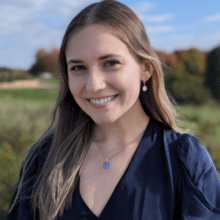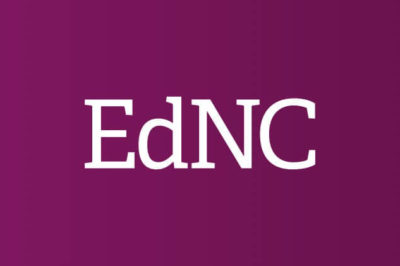
A fleet of yellow school buses crowding the street announces the start of another school day. Uniformed students and overworked adults congregate in the cafeteria, waiting for their signal. With the shriek of the 8 am bell, the migration to classrooms begins. Straight lines are formed and students enter enclosed rooms filled with 30 desks in straight rows.
For eight hours, students are exposed to a rotation of skills and practices in reading, writing, math, science, and maybe even social studies. At some point, lunch is served. Students listen. Students complete an assignment to demonstrate mastery. Students occasionally get the chance to talk with each other. The bell rings and students return home, where they prepare to come back tomorrow and do it all over again.
It is said the definition of insanity is doing the same thing over and over, expecting different results. We keep using the same approach to education yet are surprised by the same dismal results, particularly when it comes to outcomes for Black and brown youth.
Today’s prominent school model, often called the “factory model,” was designed during the industrial age of the early 1900s. It emphasizes conformity and basic knowledge acquisition, preparing students for a set of factory jobs that no longer exist, all while stifling creativity and exploration. It is a dated, one-size-fits-all approach — unsuitable for our diverse, multicultural society.
It’s clear that to meet the needs of the present and future, education needs a radical overhaul. We must transform the system into one that offers an equitable education, one that’s responsive to the diverse needs and unbridled potentials of all young people. This is both an economic and moral imperative.
Even higher stakes
So where is the transformation? It’s logical to assume that, given the obvious flaws with the factory model, schools are trying to shift toward a modernized approach: one that prioritizes creativity over conformity and decentralizes standardized testing in favor of more holistic measures of success. However, in some cases, the exact opposite is true.
In the last few decades, a more extreme version of the factory model has emerged in charter school networks, commonly referred to as the “high-stakes model.” High-stakes schools primarily serve Black and brown youth, most commonly in inner-cities. The schools are characterized by efficiency and control. Every minute of the student’s day is planned and directed by adults, and every learning experience is designed to produce high scores on standardized tests. For years, this model was heralded as the answer for educating underserved communities. More recently, however, critics have raised concerns with low college graduation rates among students who attend high-stakes schools.
We enter this conversation as a school that has been influenced by the high-stakes model and has adopted pieces of the high-stakes approach. Our school, Maureen Joy Charter School (Joy) in Durham, does not belong to a larger charter network. But during our main growing years, the high-stakes model was popular and inspiring. Like many schools, we bought into the hype. The model’s influence can still be seen at Joy in our uniform policy and tight commitment to instructional efficiency. Not long ago, Joy issued demerits for things like walking out of line or talking out of turn.
Time for a radical shift
Joy is at an important crossroads as we recognize that the high-stakes model fundamentally conflicts with our beliefs about young people and education. We are deeply convinced that by its design, any version of the factory model, including the high-stakes version, is incapable of producing equitable outcomes. The beliefs embedded in the high-stakes model run counter to our deepest conviction: that education should be freeing.
Education should cultivate a young person’s ability to think critically about the world and make sense of their experience within it so that they are prepared to live a moral, meaningful life. It should disrupt societies as they are, advancing change in pursuit of a more equitable and just world. We see no path forward with our current model and recognize that we need to make a radical shift.
This commitment to change led us to hire a new executive director in 2022 and establish The Learning Studio in summer 2023, which serves as Joy’s dedicated research and development department. While most schools are constrained by time and resources, Joy is able to invest, through the studio, in cultivating and accelerating innovation at Joy and beyond. Our goal is to build an entirely new model that centers equity, liberation, and an expanded definition of success.
Our Portrait of a Learner
The studio chose to direct its initial energy around engaging Joy staff, students, alumni, families, and board members in the process of thinking deeply about our collective aspirations for young people at Joy. These conversations culminated in the development of Joy’s Portrait of a Learner: the set of qualities that we aspire for young people to gain by the time they graduate eighth grade. This portrait grounds our new definition of success for young people. We can now work backwards to design learning experiences that position young people to achieve the aims that matter most to our community.
It’s clear that given the scope and content of our portrait, our new model will need to look at learning very differently. At Joy, we’re pursuing learning that positions skills in their authentic context and positions young people in the driver’s seat. Given that we believe education has both a personal and a larger civic purpose, we’re interested in incorporating design thinking as a process that helps young people grow their sense of agency and explore their place as citizens in a democratic society.
We aren’t the only school to pursue an approach to learning that centers the voices of youth. Research tells us that when young people exercise voice and choice over what and how they learn, it leads to better outcomes, a phenomenon that’s seen in innovative schools across the country.
We recognize that doing this well is difficult. Many schools attempt to embed voice and choice by doing projects or offering clubs, falling into the trap of oversimplifying a complex concept. We recognize that our approach must be radical and thorough. Until we reimagine the relationships that adults and young people have with learning and each other, our efforts will be inconsequential at best. When we are able to boldly break down the foundational set of assumptions around learning itself, we can make true progress toward education that liberates young people and society.
We’re grappling with the many challenges of school redesign and change management. As outlined in William Bridges’ transition model, we’re currently in the “neutral zone.” We’re saying goodbye to old ways of doing school but still working to craft our best path forward. This phase is exciting. We get to experience the joy of having a renewed purpose and reason to create.
We’re eager to find partners in this journey. If you’re interested in sharing resources or ideas, please reach out to us at learningstudio@joycharter.org. We at Joy are wishing you peace, freedom, and joy for wherever you are on your own journey.
Editor’s Note: Donnell Cannon serves on EdNC’s Board of Directors.





